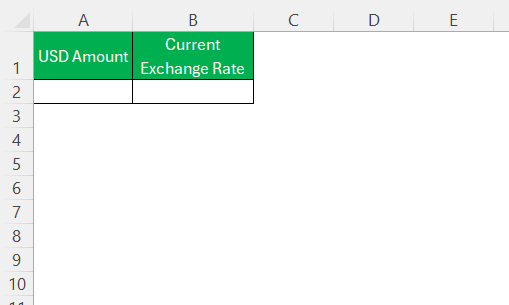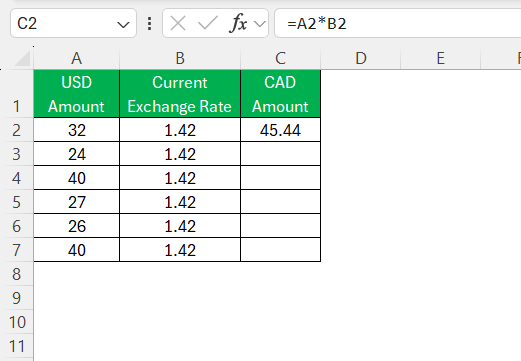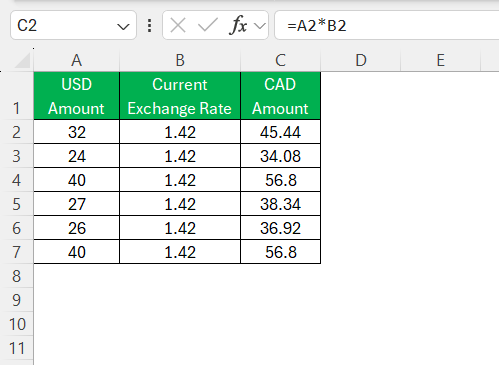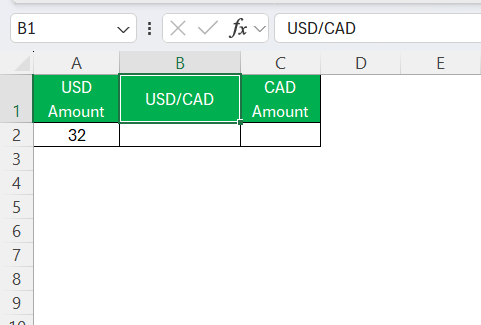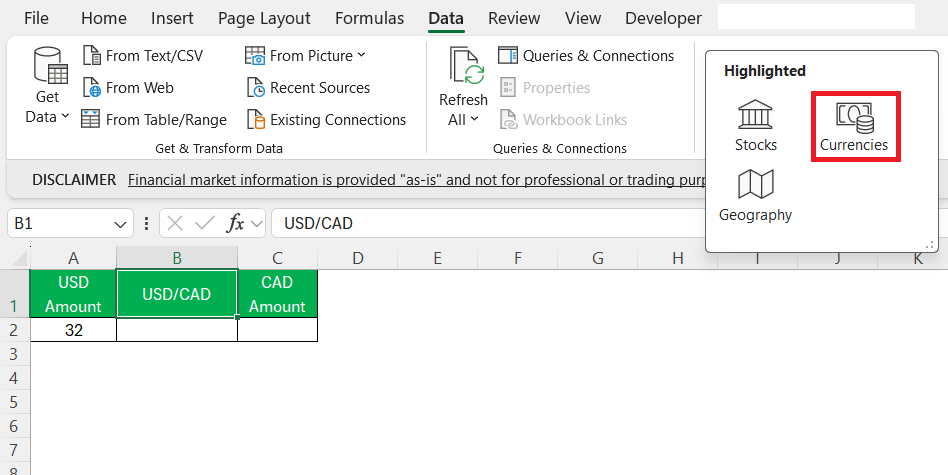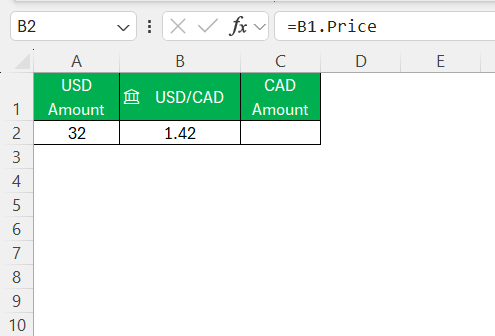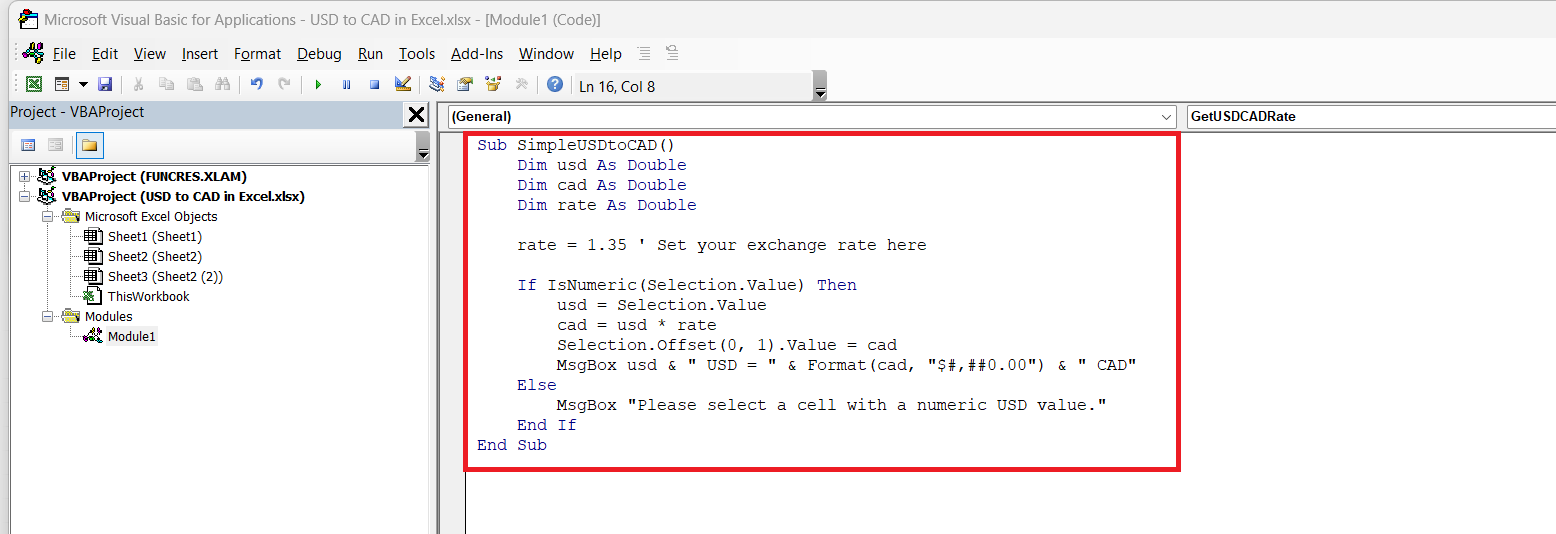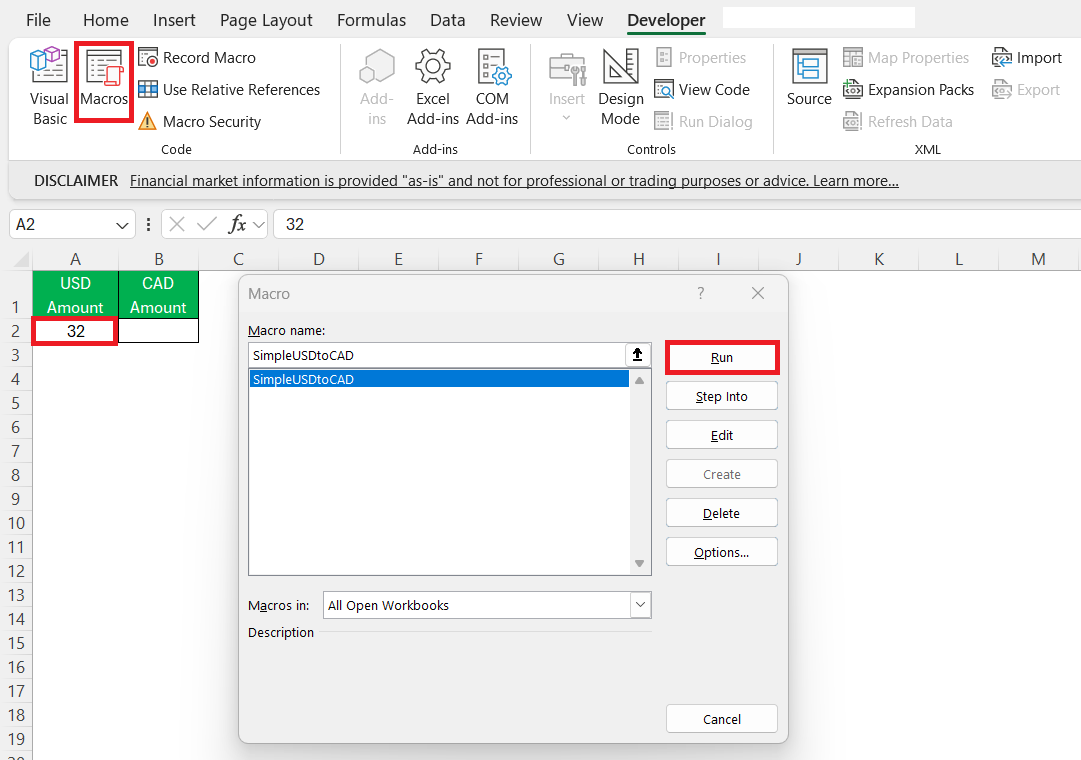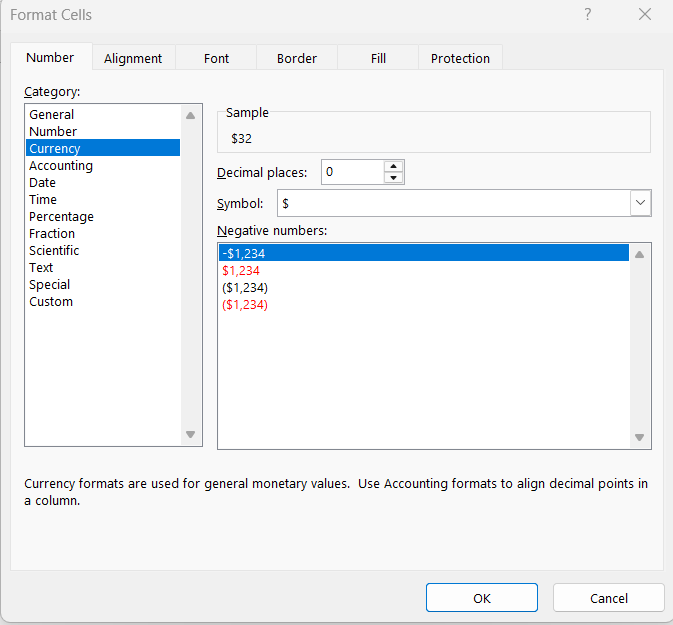As someone who works with international payments, travel expenses, and project budgets, I often have to convert currencies—especially from U.S. Dollars (USD) to Canadian Dollars (CAD). While there are countless apps and websites that can do this, I prefer using Microsoft Excel. Why? Because I can control the formulas, automate updates, and keep everything organized in one place.
In this article, I’ll walk you through how I convert USD to CAD in Excel—from the most basic manual method to advanced automatic exchange rate pulls.
Key Takeaways:
- Excel is a fast and customizable tool for managing currency conversions.
- Simple formulas like =USD*Rate make batch conversions easy and efficient.
- Live exchange rates can be pulled directly in Excel using the Currency Data Type (Microsoft 365).
- VBA macros allow for custom automation and user-friendly currency tools.
- Proper formatting and data validation are critical to ensure conversion accuracy.
Table of Contents
Why I Use Excel for Currency Conversion
Before I jump into the how, let me explain why I use Excel for conversions:
- I already manage most of my financial planning in Excel.
- It’s fast and customizable.
- I can reference the converted amounts in other calculations (like profits, taxes, or costs).
- It saves me from toggling between multiple websites.
Whether I’m converting a few values or hundreds of transactions, Excel just makes sense.
How to Convert USD to CAD in Excel
Preparing the Data
Before diving into currency conversion in Excel, it is crucial to ensure that the data is well-organized. Start by collecting all relevant data points, such as the amounts to be converted and any existing exchange rates. Place these in a clean worksheet, ideally using separate columns for the currency values and exchange rates. Label the columns clearly, such as “USD Amount” and “Current Exchange Rate.”
Ensure consistency in data entry to avoid errors during conversion. By preparing the data meticulously, we can set a solid foundation for precise currency conversions.
Applying Simple Formulas for Quick Conversions
Let’s say the USD amount is in column A, and the exchange rate is in column B.
In the cell where you want the converted CAD amount to appear, type the formula =A2*B2 and press Enter.
This basic formula multiplies the USD amount by the exchange rate, yielding the equivalent CAD amount.
You can quickly apply this formula to multiple rows by dragging the fill handle—the small square at the bottom-right corner of the edited cell—down through the column.
This replicates the formula across the specified range, facilitating batch processing of conversions and ensuring efficiency in handling large datasets. By leveraging such simple formulas, you can execute precise conversions with minimal effort.
Advanced Techniques for Accurate Conversion
Using Excel’s Built-In Currency Data Type
This one blew my mind when I discovered it. If you have Microsoft 365 or Excel for the Web, you can pull real-time exchange rates directly into your sheet!
Here’s what I do:
STEP 1: Type USD/CAD into a cell (say, B1).
STEP 2: Go to the Data tab, then click Data Types > Currency.
Excel will recognize the currency pair.
STEP 3: In another cell B2, I type:
=B1.Price
And just like that, I have the live rate!
STEP 4: Then I use the same multiply formula to convert amounts automatically.
It updates daily without me doing anything.
Using VBA (For Custom Automation)
If I’m working on a spreadsheet that others will use and I want everything automated, I write a VBA macro to fget it done.
Here’s a simple version of what I use:
Sub SimpleUSDtoCAD() Dim usd As Double Dim cad As Double Dim rate As Double rate = 1.42 ' Set your exchange rate here If IsNumeric(Selection.Value) Then usd = Selection.Value cad = usd * rate Selection.Offset(0, 1).Value = cad MsgBox usd & " USD = " & Format(cad, "$#,##0.00") & " CAD" Else MsgBox "Please select a cell with a numeric USD value." End If End Sub
Select a cell that has a USD amount (e.g., 32), then run the macro.
The converted currency amount will be displayed.
Troubleshooting Common Issues
Identifying Format Mistakes
Identifying format mistakes in Excel is crucial to ensure the accuracy of currency conversions. Such errors can inadvertently alter calculation outcomes, leading to significant discrepancies. Common formatting issues include cells formatted as text instead of numbers, incorrect decimal placements, and mismatched currency symbols.
To check for these errors, first review the affected data range. Highlight the cells you suspect may contain formatting issues. Then, navigate to the “Home” tab, and click on “Format Cells.” This opens a dialog box where you can adjust formatting settings. Ensure that cells containing numeric values are formatted as “Number” or “Currency,” which allows for precise calculations and automatic handling of decimals.
Excel’s “Text to Columns” feature is another useful tool for correcting format issues, converting text-formatted numbers into a numerical format. Also, conditional formatting can highlight cells with outliers or potential errors, providing a visual cue for further investigation.
By systematically addressing these format mistakes, you safeguard your conversion data from inaccuracies, enhancing the reliability and credibility of your financial analysis.
Ensuring Data Validation and Accuracy
Ensuring data validation and accuracy in Excel is essential for reliable currency conversion outcomes. Implementing data validation rules can help prevent erroneous data entries that can lead to significant financial miscalculations. Here’s how you can bolster data integrity:
- Data Validation Tools: To apply data validation, select the cells you want to govern. On the “Data” tab, click “Data Validation.” Here, set criteria such as allowing only decimal values within a specified range (e.g., between 1.0 and 2.0 for USD to CAD rates). This step prevents the entry of implausible exchange rates.
- Custom Messages: Use input messages and error alerts within the Data Validation settings to guide users. An input message will display instructions when the cell is selected, while an error alert will notify users if their entry falls outside the accepted range.
- Named Ranges: Consider using named ranges for exchange rates to improve formula readability and reduce errors. Assigning a name to a range or cell makes it easier to reference in formulas, ensuring all calculations reflect the most accurate values available.
- Formula Verification: Double-check formulas to ensure they correctly reference the intended cells, especially when dealing with extensive datasets. Errors in cell references can lead to substantial discrepancies in the results.
- Regular Updates: If your data relies on live exchange rates, periodically refresh the data to keep it current. This practice guards against operational mistakes stemming from outdated information.
By meticulously applying these data validation strategies, you can maintain not only the accuracy of currency conversions but also enhance the overall integrity of your data, ensuring that all analyses built upon it are sound and reliable.
FAQs
How do you convert USD to CAD in Excel?
To convert USD to CAD in Excel, enter the USD amounts in one column and the current exchange rate in an adjacent column. Use a formula like =A2*B2 to multiply the USD value by the exchange rate, placing the result in a new column for CAD amounts. Drag the fill handle down to apply the conversion formula to multiple cells efficiently.
Can Excel fetch live exchange rates automatically?
Yes, if you’re using Microsoft 365 or Excel for the Web, you can use the built-in Currency Data Type. Type a currency pair like “USD/CAD,” select it, and apply the Currency type from the Data tab. Then reference it using =B1.Price to get the live exchange rate, which updates daily.
What’s the advantage of using VBA for currency conversion?
VBA (Visual Basic for Applications) lets you automate the conversion process. You can create a macro that calculates CAD values from selected USD cells at the click of a button. This is especially useful for shared spreadsheets or repetitive conversions where consistency and speed are needed.
Why is data formatting important in Excel currency conversions?
Incorrect formatting can break your calculations. For example, text-formatted numbers won’t be included in formulas. Make sure cells are set to “Number” or “Currency” and that decimal placements are accurate. Excel’s “Text to Columns” and conditional formatting can help identify and fix these issues.
How can I prevent mistakes when entering exchange rates or currency values?
Use Excel’s Data Validation feature to restrict inputs to a reasonable range (e.g., 1.0 to 2.0 for USD/CAD). You can also add input tips and error alerts to guide users. Named ranges and careful formula checks help keep calculations consistent and avoid referencing the wrong cells.
John Michaloudis is a former accountant and finance analyst at General Electric, a Microsoft MVP since 2020, an Amazon #1 bestselling author of 4 Microsoft Excel books and teacher of Microsoft Excel & Office over at his flagship MyExcelOnline Academy Online Course.

